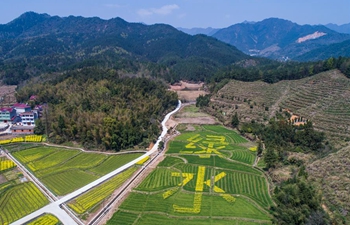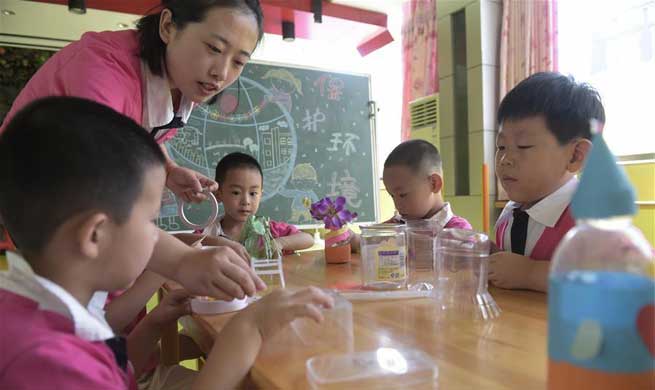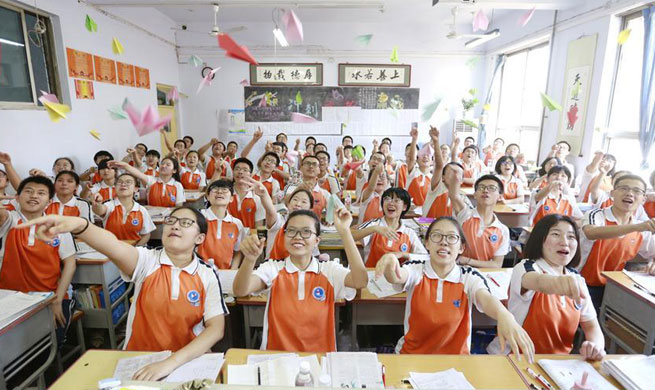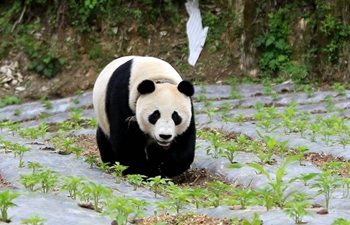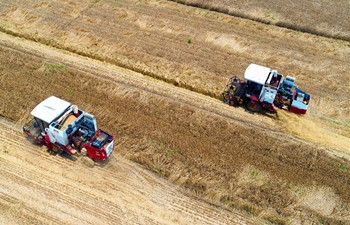BEIJING, June 5 (Xinhua) -- China has achieved remarkable results in intellectual property right (IPR) protection, according to an official at the State Intellectual Property Office Tuesday.
Shen Changyu, head of the office, made the remarks at a forum in Beijing. The forum evaluated the country's IPR achievements since 2008, when a national IPR strategy was unveiled.
"China will accelerate the modernization of the IPR governance system and ability and further promote the application and transformation of intellectual property to create more social benefits," Shen said,
Yan Junqi, an expert of the IPR evaluation group, said China had made remarkable achievements in implementing the national IPR strategy. And the strategy supported economic and social development.
China made 1.38 million patent applications for inventions in 2017, up 14.2 percent, the highest in seven years.
FORCEFUL MEASURES
China now has three IPR courts and is revising its Patent Law to establish a punitive damage system for intellectual property infringement.
Since 2008, China has revised its trademark and copyright laws, and an increasingly sound intellectual property system is taking shape.
In the past five years, 192,000 cases of patent infringement and counterfeiting were investigated and punished in China, as well as 173,000 cases of trademark infringement and counterfeiting.
The level of social satisfaction with IPR protection in China climbed from a score of 63.69 to 76.69 between 2012 and 2017, according to a State Intellectual Property Office survey.
The country has established 19 intellectual property protection centers nationwide, aiming to provide more convenient and efficient channels at lower cost to safeguard rights and accelerate rights authorization and confirmation.
The processing cycle of patent infringement cases has shortened to one month from over three months, while the authorization cycle for invention patents has shortened from an average 22 months to three months.
The review cycle of the trademark registration has shortened to eight months from nine months.
TRANSFORMATION
China has taken measures to push transformation of intellectual property into real applications.
Nearly 80 percent of universities in China have set up full-time or part-time intellectual property management institutions. More than 60 percent of universities have established IPR-related interest distribution systems.
From 2008 to 2016, the Chinese Academy of Sciences has increased the transfer of intellectual property rights from 257 to 1,154 cases, and the total revenue increased from 642 million yuan (about 100 million U.S. dollars) to 2.56 billion yuan.
The transformation and application of intellectual property has led to the rapid development of related industries. In 2015, the added value of China's patent-intensive industries accounted for 12.4 percent of GDP.
MORE INTERNATIONAL COOPERATION
China has joined many major international intellectual property conventions, and signed agreements with patent review organizations in 23 countries and regions on the Patent Prosecution Highway.
In 2017, the country ranked second in international patent applications, with 51,000 Patent Cooperation Treaty applications.
In 2017, China paid 28.6 billion U.S. dollars of intellectual property royalties to overseas rights owners.
Lu Pengqi, vice chairman of the China Council for the Promotion of International Trade, said that many Chinese companies had encountered IPR infringement overseas such as preemptive trademark registration and malicious lawsuits.
"With Chinese enterprises expanding overseas, the need for overseas intellectual property protection has become more urgent," Lu said.
Shen said China would further deepen international cooperation in IPR and promote open and balanced international IPR rules.






